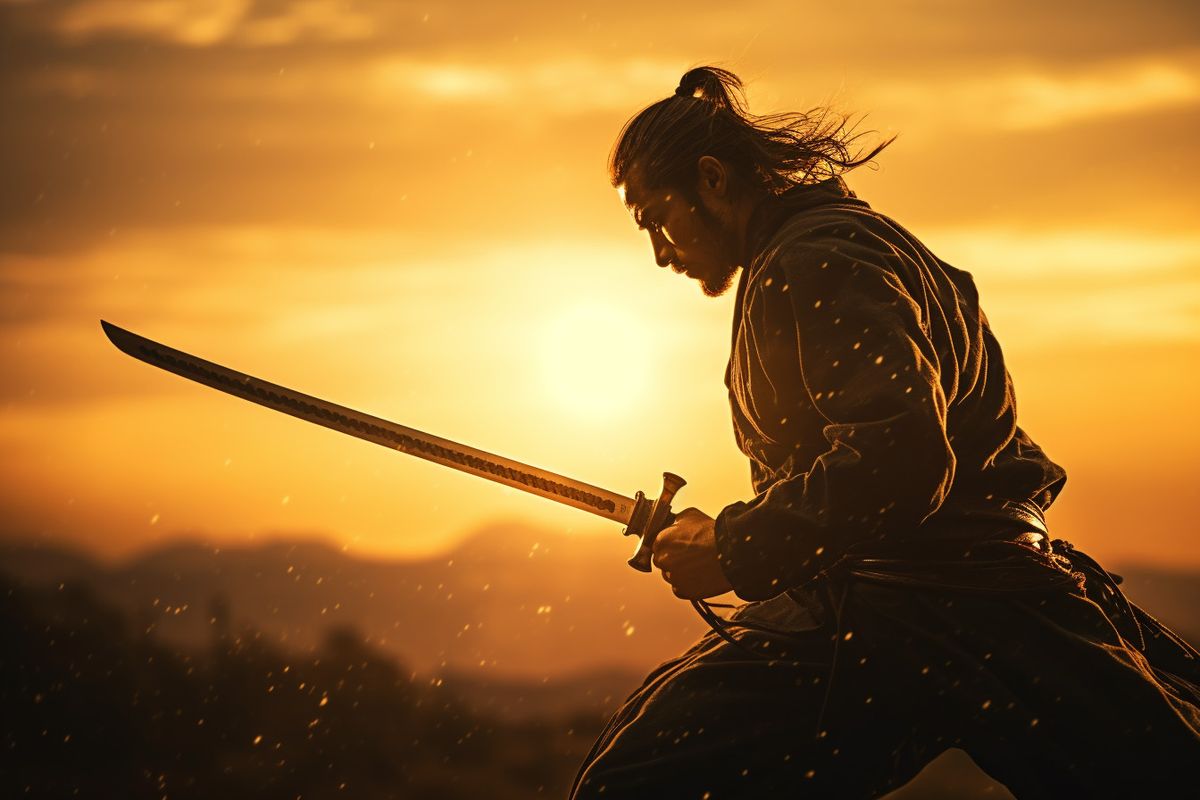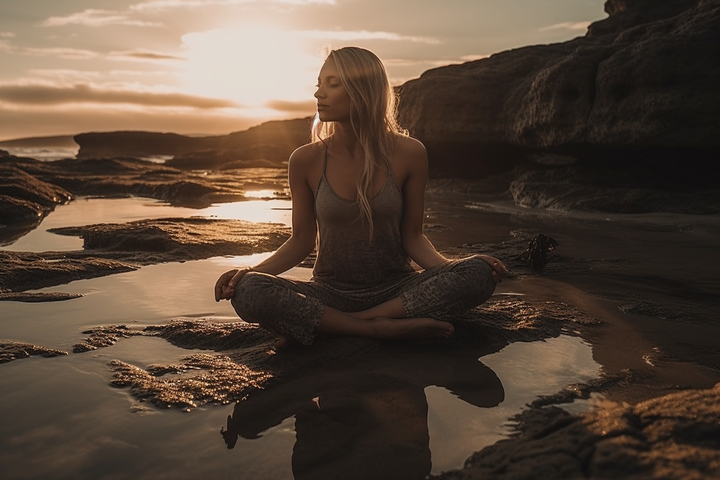Boost Your Yoga Routine with Warrior II Pose
Warrior II is not merely a physical stance; it's a wellspring of inner and outer strength, balance, and focus. With roots deep in mythological lore, it invites you to embody the characteristics of a fierce and focused warrior.

Introduction: Unveiling the Warrior Within
Warrior II is one of the most iconic poses in yoga that both beginners and advanced practitioners incorporate into their routines. This guide will delve into the historical background, benefits, and instructions to perform this asana effectively.
Historical Background: The Mythology of Virabhadrasana II
The Origin Story: Shiva and Sati
The story of Virabhadrasana II begins with a tragic tale from Hindu mythology, involving the god Shiva and his consort Sati. When Sati's father, King Daksha, disrespected Shiva, Sati was filled with shame and sorrow, leading her to throw herself into a fire.
The Creation of Virabhadra
In a moment of overwhelming grief and rage, Shiva created Virabhadra. Striking a lock of his hair onto the ground, he manifested this fierce warrior to avenge the insult and loss.
The Significance of the Name
The name Virabhadrasana II comes from Sanskrit, an ancient Indian language that serves as the linguistic foundation for yoga terminology. The term itself is a composite of three Sanskrit words: "Vira," "Bhadra," and "Asana."
- Vira: This word translates to 'hero' or 'warrior,' and in this context, it refers to Virabhadra, the mythical warrior created by Lord Shiva.
- Bhadra: This word can mean 'auspicious,' 'fortunate,' or 'friend,' indicating the favorable attributes of the warrior.
- Asana: This term translates to 'pose' or 'posture,' which is a common suffix for the names of yoga poses.
The Role of Drishti: Focused Gaze
In Warrior II, your gaze (or Drishti) is focused on the middle finger of your forward hand. This represents the warrior’s unwavering focus on his target, undistracted by his surroundings.
The Evolution Over Time
While originally rooted in Hatha Yoga, Warrior II has found its way into modern yoga systems like Vinyasa and Power Yoga. Despite the adaptations, the essence—focus, strength, courage—remains the same.
Physical Benefits: Strengthen Your Body and Improve Alignment
Core Strength and Stability
One of the most immediate benefits of Warrior II is the core engagement required to maintain the posture. It fires up the muscles in the abdomen, obliques, and lower back, thereby improving core strength and stability.
Lower Body Powerhouse
Warrior II is an excellent asana for toning the legs, especially the quadriceps, hamstrings, and calves. It also strengthens the glutes, aiding in better posture and providing a solid foundation for many other standing poses.
Shoulder and Arm Toning
The extended arms in this pose engage the deltoids and biceps, leading to stronger arms and shoulders. This helps improve your upper body strength, which can be beneficial in performing day-to-day activities.
Enhanced Alignment and Balance
Maintaining the pose requires focus on alignment—from the position of your feet and knees to the direction of your hips and shoulders. This focus on alignment helps in enhancing body awareness and balance, critical factors in any yoga practice.
Spinal Health
By engaging the core and focusing on upright posture, Warrior II contributes to better spinal alignment. This is particularly beneficial for individuals who spend long hours sitting.
Step-By-Step Instructions: Achieve Warrior II Mastery
Preparation: Find Your Grounding
- Start in Tadasana (Mountain Pose): Begin your journey into the strength and stability of Warrior 2 by grounding yourself in Mountain Pose, the foundation of the warrior within.
Step Into the Pose
- Step Back: Take a big step back with your right foot, around 3 to 4 feet apart depending on your height. Make sure both heels are aligned.
- Position Your Feet: Turn your right foot so it is parallel to the back edge of your mat. Pivot your left foot slightly in, around 15 degrees.
Align the Lower Body
- Engage the Legs: Firm your thighs and turn your left thigh outward, so that the center of the left knee cap aligns with the center of the left ankle.
- Bend the Front Knee: Exhale as you bend your left knee over the left ankle, so that the shin is perpendicular to the floor. If possible, bring the left thigh parallel to the floor.
Upper Body Alignment
- Square the Hips: Aim to keep your hips squared and facing forward. This might require drawing back with your left hip and pushing your right hip forward.
- Raise the Arms: Extend your arms parallel to the floor, reaching actively from fingertip to fingertip. Make sure your arms are in line with your shoulders.
Focus and Hold
- Gaze: Turn your head to the left and look over the fingers of your left hand. This is your drishti, or focal point.
- Hold and Breathe: Maintain the pose for 30 seconds to 1 minute. Keep breathing deeply, engaging your core, and keeping your gaze steady.
Exit Gracefully
- Straighten the Front Leg and Lower Arms: To release the pose, inhale as you straighten your left knee. Lower your arms and step your right foot forward to return to Tadasana.
- Repeat on the Opposite Side: Make sure to balance your body by performing the same steps on the opposite side.
Common Mistakes to Avoid: Fine-Tune Your Practice
Overarching the Lower Back
- Mistake: Allowing the tailbone to tilt up, leading to a compressed lower back.
- Correction: Tuck the tailbone slightly under and engage the core to maintain a neutral spine.
Misaligned Feet
- Mistake: Feet not in the correct alignment can lead to uneven distribution of weight and stress on the joints.
- Correction: Ensure that your front heel is aligned with the arch of your back foot for better balance and stability.
Knee Beyond Ankle
- Mistake: Allowing the front knee to extend beyond the ankle, putting extra stress on the knee joint.
- Correction: Make sure your front knee is directly above your ankle to protect the knee joint.
Dropping the Hips
- Mistake: Letting the hips drop too low can strain the lower back.
- Correction: Keep the hips squared and level, in line with your front knee and ankle.
Lax Arms or Uneven Shoulders
- Mistake: Allowing the arms to droop or the shoulders to lift towards the ears can strain the neck and shoulders.
- Correction: Keep your arms strong and extended, and your shoulders down and back, away from the ears.
Loss of Drishti (Focus)
- Mistake: Flickering eyes or losing your focal point can affect your balance.
- Correction: Maintain a steady gaze over the fingers of your front hand to improve focus and stability.
Ignoring the Breath
- Mistake: Holding the breath or breathing shallowly can cause tension and instability.
- Correction: Keep your breath smooth and steady, inhaling and exhaling deeply.
Modifications and Variations: Customize Your Pose
Warrior II is a pose that welcomes all levels, but the key to a sustainable practice is knowing how to adapt the pose to your unique needs. Here are some modifications and variations to make Warrior II work for you.
Arm Variations: Add Movement
- Variation: Incorporate arm movements, such as lifting the arms up as you inhale and lowering as you exhale.
- Benefit: This adds a dynamic element to the pose and also helps improve upper body strength.
For Focused Breathwork: Synchronize with Breath
- Variation: Coordinate the movement into and out of the pose with your breath.
- Benefit: This increases awareness and makes the pose a moving meditation.
For More Intensity: Hold the Pose Longer
- Variation: Increase the time you hold the pose, aiming for more than 5 breaths.
- Benefit: A longer hold increases endurance and mental focus.
Complementary Poses: Expand Your Yoga Repertoire
Downward Dog
Downward Dog, also known as Adho Mukha Svanasana, is a classic asana for good reason. It offers a comprehensive stretch to the hamstrings and calf muscles while strengthening the arms and shoulders.
This engagement of the upper and lower body can be particularly beneficial after the strong muscular work involved in Warrior II.
Additionally, Downward Dog serves as a semi-inversion, increasing blood flow to the brain, which can be invigorating after the intensity of Warrior II.
Triangle Pose
Triangle Pose, or Trikonasana, is another excellent standing pose that hones in on leg flexibility and balance. Similar to Warrior II, it requires a strong sense of grounding through the feet while the upper body expands.
The side stretch experienced in Triangle Pose can be a great counterbalance to the lateral hip opening in Warrior II, offering a different kind of stretch and engagement to your leg and hip muscles.
Extended Side Angle Pose
Extended Side Angle Pose, known as Utthita Parsvakonasana, builds on the foundational aspects of Warrior II. It further engages your quads and glutes while providing a deep stretch along the side of your body.
This can be beneficial for opening up the hips and enhancing the strength you've been building in your lower body through Warrior II.
Tree Pose
Tree Pose, or Vrksasana, offers a different kind of challenge. Unlike Warrior II, which requires the engagement of both legs, Tree Pose requires you to stand on one leg, enhancing your balance and mental focus.
This form of stability training can make your Warrior II practice even more solid, as it requires similar concentration and awareness of body alignment.
Conclusion: Embrace the Power of Warrior II
As you can see, Warrior II is not merely a physical stance; it's a wellspring of inner and outer strength, balance, and focus. With roots deep in mythological lore, it invites you to embody the characteristics of a fierce and focused warrior.
Whether you're new to yoga or a seasoned practitioner, the pose offers a multitude of layers to explore—from mastering the basic alignment to deepening your emotional and mental awareness.



Comments ()